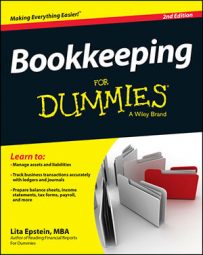Testing your books starts with counting your cash. Why start with cash? Because the accounting process starts with transactions, and transactions occur when cash exchanges hands either to buy things you need to run the business or to sell your products or services.
Before you can even begin to test whether the books are right, you need to know if your books have captured what’s happened to your company’s cash and if the amount of cash shown in your books actually matches the amount of cash you have on hand.
You’ve heard the well-worn expression, “Show me the money!” Well, in business, that idea is the core of your success. Everything relies on your cash profits that you can take out of your business or use to expand your business.
The daily process of proving out cash taken in by cashiers gives a business good control of the point at which cash comes into the business from customers who buy the company’s products or services. It also measures any cash refunds that were given to customers who returned items. But the points of sale and return aren’t the only times cash comes into or goes out of the business.
If your business sells products on store credit, some of the cash from customers is actually collected at a later point in time by the bookkeeping staff responsible for tracking customer credit accounts. And when your business needs something, whether products to be sold or supplies needed by various departments, you must pay cash to vendors, suppliers, and contractors.
Sometimes cash is paid out on the spot, but many times the bill is recorded in the Accounts Payable account and paid at a later date. All these transactions involve the use of cash, so the amount of cash on hand in the business at any one time includes not only what’s in the cash registers but also what’s on deposit in the company’s bank accounts.
You need to know the balances of those accounts and test those balances to be sure they’re accurate and match what’s in your company’s books.
So your snapshot in time includes not only the cash on hand in your cash registers but also any cash you may have in the bank. Some departments may also have petty cash accounts, which means you total that cash as well. The total cash figure is what you show as an asset named “Cash” on the first line of your company’s financial statement, the balance sheet.
The balance sheet shows all that the company owns (its assets) and owes (its liabilities) as well as the equity the owners have in the company.
The actual cash you have on hand is just one tiny piece of the cash moving through your business during the accounting period. The true detail of what cash has flowed into and out of the business is in your cash journals. Closing those are the next step in the process of figuring out how well your business did.

